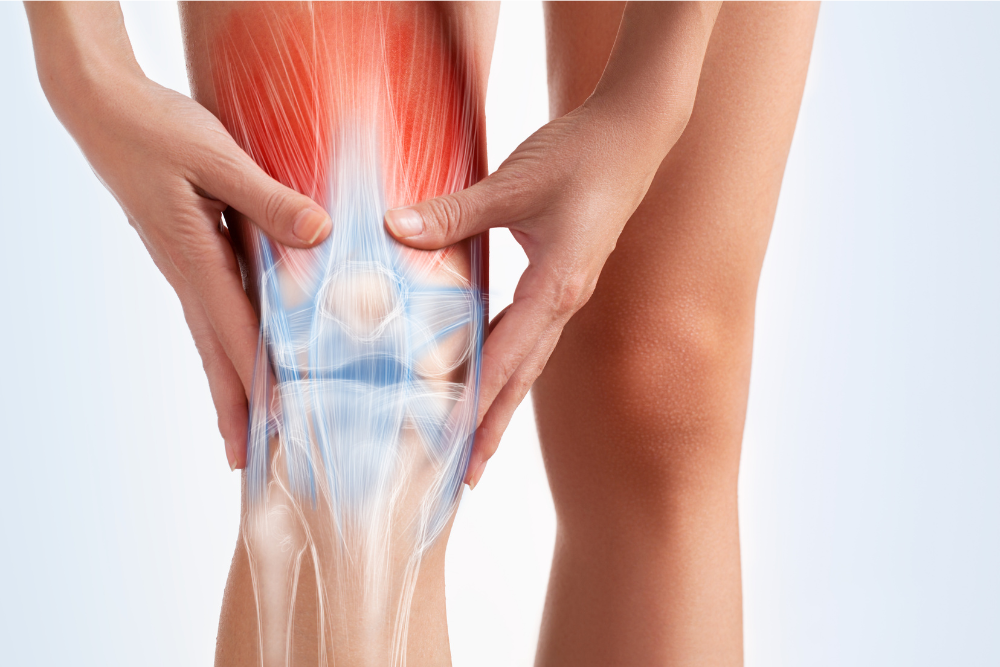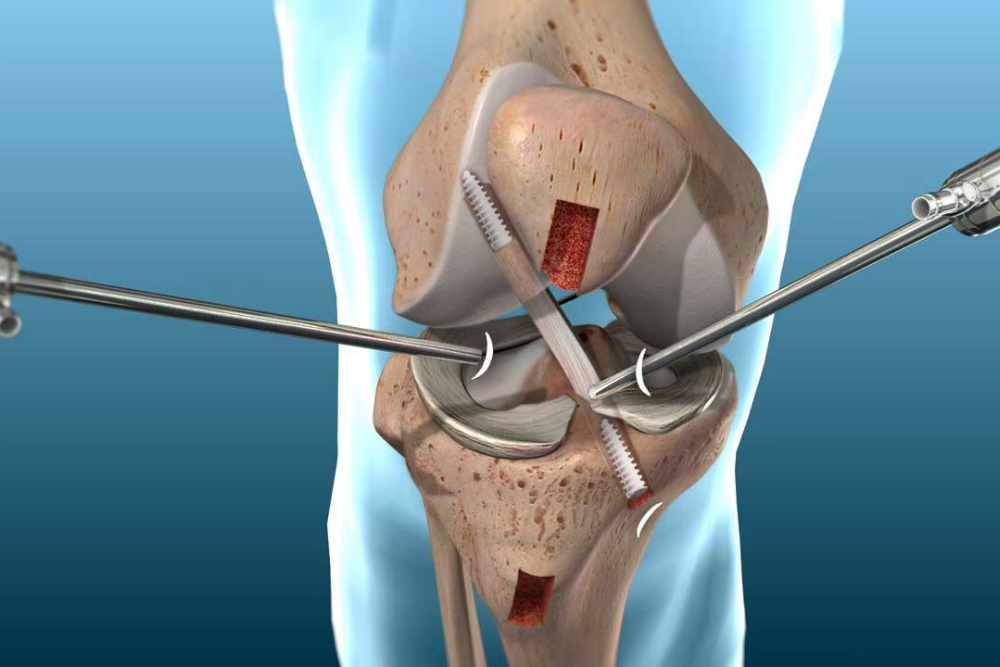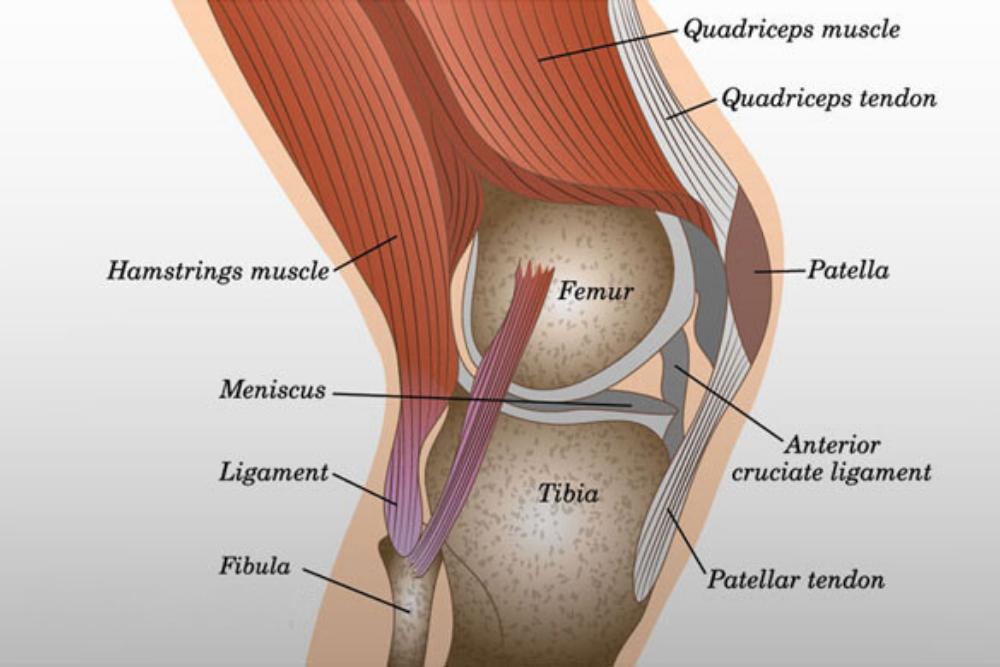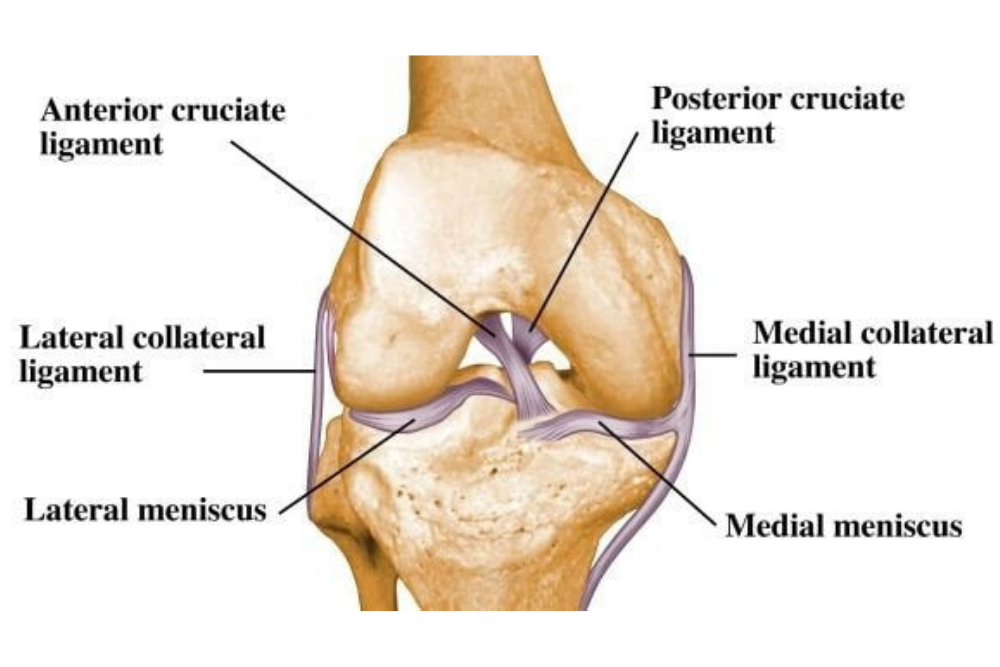Knee arthroscopy is a minimally invasive surgical procedure that involves inserting a small camera (arthroscope) into the knee joint through a tiny incision. This allows the surgeon to examine the internal structures of the knee and perform necessary repairs or treatments.
Our Treatments
- Home
- Treatments

Knee Arthroscopy
Knee arthroscopy is a minimally invasive surgical procedure used to diagnose and treat various knee conditions. It involves inserting a small camera (arthroscope) into the knee joint through a tiny incision, allowing the surgeon to examine the internal structures and perform necessary repairs or treatments.


ACL Reconstruction
The anterior cruciate ligament (ACL) is a crucial stabilizing ligament in the knee joint. ACL reconstruction is a common arthroscopic procedure performed to repair a torn or damaged ACL, often caused by sports injuries or trauma. This surgery aims to restore knee stability and prevent further damage.
PCL Reconstruction
The posterior cruciate ligament (PCL) is another important stabilizing ligament in the knee joint. PCL reconstruction is an arthroscopic procedure performed to repair a torn or damaged PCL, often caused by traumatic injuries or accidents. This surgery helps restore knee stability and proper joint function.
Multiligament Knee Reconstruction
In some cases, multiple ligaments in the knee joint may be damaged or torn, requiring a more complex surgical procedure called multiligament knee reconstruction. This arthroscopic surgery aims to repair or reconstruct multiple ligaments, such as the ACL, PCL, and other supporting structures, to restore knee stability and function.
Meniscus Repair
The meniscus is a cartilage disc in the knee joint that acts as a shock absorber and helps stabilize the joint. Arthroscopic meniscus repair is a procedure performed to repair a torn or damaged meniscus, often caused by sports injuries or degenerative conditions. This surgery aims to preserve the meniscus and prevent further damage.
Cartilage Repair
Cartilage damage or defects in the knee joint can lead to pain, swelling, and limited mobility. Arthroscopic cartilage repair procedures, such as microfracture or autologous chondrocyte implantation (ACI), are performed to repair or regenerate damaged cartilage, improving joint function and reducing pain.
Synovectomy
Synovectomy is an arthroscopic procedure performed to remove inflamed or damaged synovial tissue from the knee joint. This surgery is often recommended for patients with conditions like rheumatoid arthritis or synovial disorders, where the synovial tissue becomes inflamed and causes pain and swelling.
ACL Reconstruction
The anterior cruciate ligament (ACL) is a crucial stabilizing ligament in the knee joint. ACL reconstruction is a common arthroscopic procedure performed to repair a torn or damaged ACL, often caused by sports injuries or trauma. This surgery aims to restore knee stability and prevent further damage.
During the procedure, the surgeon will remove the damaged ACL and reconstruct it using a graft, typically taken from the patient's own tissue (autograft) or from a donor (allograft). The graft is then secured in place, allowing it to heal and function as a new ACL.
ACL reconstruction is often recommended for active individuals who wish to return to sports or activities that involve pivoting, cutting, or jumping. Proper rehabilitation and physical therapy are essential for a successful recovery and regaining full knee function.

PCL Reconstruction
The posterior cruciate ligament (PCL) is another important stabilizing ligament in the knee joint. PCL reconstruction is an arthroscopic procedure performed to repair a torn or damaged PCL, often caused by traumatic injuries or accidents. This surgery helps restore knee stability and proper joint function.
Similar to ACL reconstruction, the damaged PCL is removed, and a graft is used to reconstruct the ligament. The graft can be taken from the patient's own tissue or from a donor. The surgeon will secure the graft in place, allowing it to heal and function as a new PCL.
PCL reconstruction is typically recommended for individuals who experience knee instability, pain, or difficulty with activities that involve weight-bearing or deceleration. Proper rehabilitation and physical therapy are crucial for regaining full knee strength and stability after the procedure.

Multiligament Knee Reconstruction
In some cases, multiple ligaments in the knee joint may be damaged or torn, requiring a more complex surgical procedure called multiligament knee reconstruction. This arthroscopic surgery aims to repair or reconstruct multiple ligaments, such as the ACL, PCL, and other supporting structures, to restore knee stability and function.
Multiligament knee reconstruction is typically performed in cases of severe knee injuries or trauma, where multiple ligaments have been compromised. The procedure involves reconstructing the damaged ligaments using grafts, which can be taken from the patient's own tissue or from a donor.
Rehabilitation after multiligament knee reconstruction is extensive and may take several months to a year or more. Proper physical therapy and a structured rehabilitation program are crucial for regaining full knee strength, stability, and range of motion.

Any Questions
Knee arthroscopy can be used to treat a variety of conditions, including torn meniscus, ACL or PCL tears, cartilage damage, synovitis (joint inflammation), and loose bodies within the joint.
ACL (Anterior Cruciate Ligament) reconstruction is an arthroscopic procedure performed to repair a torn or damaged ACL, which is a crucial stabilizing ligament in the knee joint. This surgery aims to restore knee stability and prevent further damage.
PCL (Posterior Cruciate Ligament) reconstruction is an arthroscopic procedure performed to repair a torn or damaged PCL, another important stabilizing ligament in the knee joint. This surgery helps restore knee stability and proper joint function.
Multiligament knee reconstruction is a complex surgical procedure performed when multiple ligaments in the knee joint are damaged or torn. This arthroscopic surgery aims to repair or reconstruct multiple ligaments, such as the ACL, PCL, and other supporting structures, to restore knee stability and function.
The recovery period after knee arthroscopy can vary depending on the specific procedure performed and the extent of the injury or condition. Generally, it can take several weeks to months for a full recovery, with proper rehabilitation and physical therapy being crucial for regaining strength, flexibility, and mobility.
Sunday: 10AM - 8PM
info@drramakantbhivsan.com
